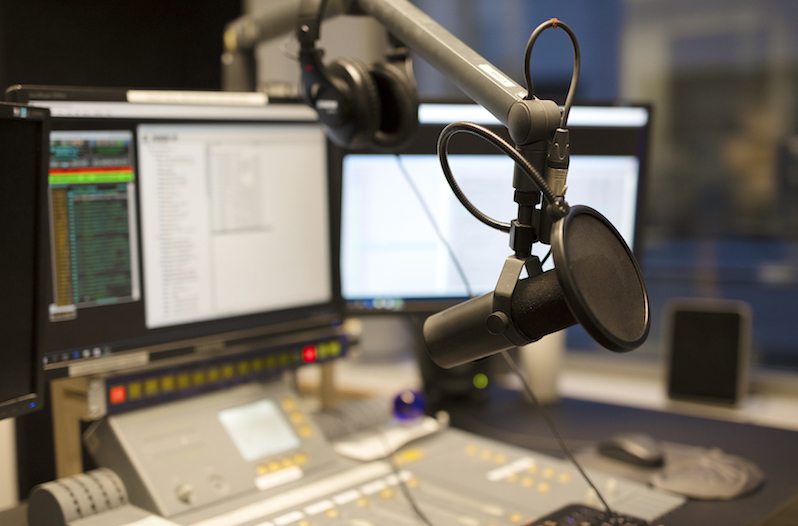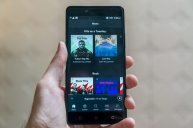[dropcap]A[/dropcap] few times a year, we hear about the impending death of commercial radio. But then we also hear about how commercial radio is still the cornerstone of country music success.
Videos by Wide Open Country
"Everyone in radio is very committed to and passionate about it," says RJ Curtis, the VP of Country for All Access Music Group and former president and current VP of Country Radio Broadcasters' Board of Directors. "They're believers in it, and I don't think they feel that it's dying."
But we're asking the wrong question right now. The question isn't, "Is country radio dying?" The question is: in its current format, does it deserve to?
Let's take a step back for a minute. Death is such a dramatic concept, and the fact that radio is a 98-year-old medium only intensifies the impact of the question.
"Dying is a loaded word," agrees Jeff Green, a prominent radio research analyst whose previous work experience includes five years as VP of Operations at Country Aircheck, as well as executive roles in both the Americana Music Association and the Country Music Association. "As much as so many people might think otherwise, country fans are remarkably loyal to country radio."
A Toxic Culture
But given radio's reputation as a seedy underworld and excessively expensive brass ring in the business, many label executives, artists and marketing gurus privately salivate at the thought of the cash-burning radio industry collapsing on itself. From payola to sexual harassment, if it's bad in music, the radio industry is probably known for it.
For instance, sexual harassment in the country radio world is something that was often known about, but not often talked about. Not until recently, at least, when several women like Katie Armiger started coming forward with tales of unwanted advances, conversations and physical contact.
Yet many artists choose to stay quiet for fear that speaking out could hurt their careers. Because, as one label executive notes, country radio still feels a sense of entitlement and power as a gatekeeper.
Even in compiling information and interviews for this article, many sources chose to remain anonymous. Others cautioned that writing an article that could be perceived as challenging country radio's relevance or importance could hurt my own career. The phrase "they might run you out of town" was jokingly thrown out more than once.
Cars Drive Radio
"Country radio is not dying, but share of ear is declining slowly," Green says. "The lion's share of radio's consumption occurs in the car. Many people don't even have a clock radio anymore."
Studies from Edison Research, Nielsen and Albright, O'Malley, & Brenner all confirm the majority of people listen to AM/FM radio at some point in the week, even if streaming is starting to attract a greater share of audio consumption.
Radio consumption happens in cars more than anywhere else by a wide margin. And yes, the inevitable self-driving car revolution could severely eat into radio's "share of ear," since people will be able to actively watch content, read or work in the car. But that's in 10 to 20 years, not two to three. Radio is nothing if not resilient.
In country, pop, and other popular formats, getting a song on the radio is also incredibly expensive. Record labels fork over hundreds of thousands of dollars, sometimes more than $1 million, to promote artists up to No. 1 status.
Pay To Play
Why is trying to get played on commercial radio so expensive?
"That's a hard one to answer," says Curtis, who also spent 2009-11 at Arista Nashville promoting artists like Carrie Underwood, Brad Paisley and Jerrod Niemann to country radio. The easy answer is "marketing, travel and personnel costs."
But what that actually used to mean was, well, bribes. Labels gave money to independent promoters, who then paid off programmers and DJs to spin songs. Drugs, vacations, electronics, appliances — whatever it took, labels competed for the best bribe. It's called "payola," and in the mid-2000s New York State Attorney General Eliot Spitzer dropped the hammer on labels for the illegal practice.
Nowadays, the radio community reportedly cleaned up its act. But the costs to promote to radio haven't decreased significantly to reflect that. Travel expenses easily eat up budgets. Musicians are expected to visit most major radio stations to meet radio DJs and program directors, which becomes increasingly expensive. Labels also buy a hefty amount of advertising in radio trade magazines.
But other costs suggest clever manipulations of old tactics. "It's the newest version of payola," says a former VP of a major record label, speaking on the condition of anonymity because they still work in the industry. Another former major label executive agrees, mentioning the expensive tastes of radio programmers. "A dinner with the radio guys is not a cheap meal," the source says. "Radio guys see the label coming to town and they think it's time for a good meal. They're not going to Chili's, if you know what I mean. One night we spent $2,200 on one dinner."
Of course, buying dinner to curry favor isn't necessarily a revolutionary business tactic, even if the ticket is excessively steep.
But then there are "flyaways," which are basically when a label pays to send a DJ or programmer on a vacation to see their artist play. Labels also spend money on hosting free shows for the station and sending prizes for giveaways — from tickets, to merchandise, to experiences, to gift cards and more, according to a source familiar with the tactics.
That's why you almost never hear anybody except major label artists on corporate country radio. They're usually the only artists backed by a company that can afford to play the game. Even independent artists with large chunks of money to spend on radio rarely make it into the top 10 because radio wants to know that if they spend time spinning the artist, the label will keep financially supporting subsequent music. Few programmers in radio want to be the first to back an artist that might not be a radio darling.
So it takes money to get there. As a song climbs the chart, it only gets more expensive. A radio single can take 10 weeks to get into the top 40 and 6 months or longer to hit No. 1.
Is It Still Worth The Risk?
Back when people bought more CDs and radio was one of the only ways to discover music, labels justified the costs. They had a large artist like a Britney Spears or Garth Brooks raking in money on music sales, and one superstar created enough money to sign 10 other acts in the hopes one of them might also break big, so the proposition of spending a million dollars to promote a new artist at radio wasn't too tough a pill to swallow.
But now, given the decline in physical sales and the growing number of alternatives to radio (like streaming), could labels start spending less money on helping more artists grow successful outside of radio? Even for major acts, streaming is showing a bigger direct return on investment.
Sam Hunt is country's most-streamed artist, thanks in large part to his crossover success. He's been on Spotify since 2014 and has two albums as well as a few singles available. His top 10 songs cumulatively have more than 1,059,000,000 streams. Even using some basic ballpark figures and math, it's fair to conclude Hunt's streaming revenue dwarfs direct revenue from radio play — and without spending millions of dollars on promotion.
Research shows radio play can influence streaming among certain demographics, but younger listeners who are far and away more likely to use Spotify are also more likely to drive streams — they're also the generation less likely to listen to radio.
The fact that radio got behind Sam Hunt is obviously a part of his success. But for every radio hitmaker, there are dozens of artists who get dropped because the stars didn't align. Or maybe the $2,200 meals weren't satisfactory.
Flawed Tactics
A lot of labels pour serious dollars into trying to fit a round peg into a square hole. Then if an artist doesn't make it at radio, they may not get the same level of support from their label. While a few current stars rebounded after being dropped from labels, including Jason Aldean and Little Big Town, the sad reality is a lot of artists never recover from the stigma. Hundreds more never even get a shot.
Meanwhile in just the past few years we've seen several country artists build strong foundations in streaming. In fact, three of country music's promising new artists all broke online before they even had a record deal. Maren Morris, Kane Brown and Luke Combs have all been heralded as different yet equally riveting new voices in country music. Social media was abuzz and streaming services offered access to these artists often well ahead of radio.
"All three of those acts could've continued on their own and made good money," says a former major label executive. "But there's still this notion of grabbing the brass ring, and it's radio."
So now labels use streaming services as a bit of "testing grounds" for artists to see if they could potentially work at radio. They try to see if the current streaming population warms up to a song before going for radio adds.
It's peculiar thinking, since it's safe to assume income from radio play likely doesn't cover the promotion costs it took to get it there (and labels usually only get a fraction of that income, depending on their relationship with the writers). Which is why labels rely on ancillary revenue streams boosted by radio exposure. But streaming's growth could potentially match or exceed the long-term value of radio exposure at fractions of the promotional cost.
The vast majority of concert tickets sell online. In the past year alone, streaming platforms have made it increasingly easy to market concert performances and merchandise for little (or zero) cost simply by placing shirt links and concert dates in front of listeners. It's one less step for a potential customer compared to radio advertising. When you spend money getting email addresses and streaming followers instead of blanket airplay, you build a better understanding of your core consumer.
Plus, with streaming, artists have access to data like what cities they're being played in most across the globe, how many are "favoriting" and "playlisting" the song and how people are discovering it. While Nielsen reports that radio reaches more than 90% of Americans aged 12 and over every week, there are real questions about how long people are actually listening — and how engaged they are when doing so. Radio can't even guarantee an estimated listener heard the tune, much less loved it.
Labels are better off spending tens of thousands of dollars in digital marketing efforts to find fans, get their contact info and drive them to streaming than they are spending hundreds of thousands of dollars chasing radio.
If labels and country artists redirected all those radio promo dollars to finding their fans online and incentivizing digital music consumption, they'd likely see returns at a greater overall success rate. Labels could afford to support critically acclaimed artists who don't do well on radio because they operate at reduced costs and greater margins.
Could Country Fall Behind?
Continuing to prioritize country radio over streaming could ultimately marginalize and hurt country music. The genre is already years behind in terms of market share on streaming services like Spotify. Country music accounted for only 6% of all streamed music in 2016.
The good news is it's growing, with more than one in five paid users streaming at least five country songs per day on Spotify in 2017. The bad news is it's not growing nearly at the rate of other genres, and that means it's not capturing the same share of financial growth, either.
At the time of this writing, only three country artists appear in the Top 50 Spotify charts for most-played songs per day, and all three of them are collaborators on pop songs.
Think Sam Hunt's one billion-plus streams for his catalog is a lot? Ed Sheeran's single "Shape Of You" came out 13 months ago and has 1.6 billion streams. Khalid is a new R&B artist who released his debut album in March 2017. He's not even in the top 10 most-streamed artists on Spotify, but his top 10 songs have more than 1,745,000,000 streams.
As streaming music grows in popularity — and it's just the beginning for streaming audio — the country industry should encourage artists to drive fans to streaming platforms and interact with them there. Otherwise, country could fall behind in the overall success of streaming.
Streaming is driving revenues in the industry. It accounts for more revenue than downloads, CDs, and vinyl combined, but it's also a global gateway. It's a platform that transcends borders and tells you where your fans are.
At least 100 million Americans identify themselves as country music fans — more than any other genre. Even more importantly, country's popularity in the United Kingdom, Germany, Canada and Australia is rising. Even South Africa, Italy, Northern India and Southeast Asia are all seeing an uptick in country music interest during events like the Grammys.
For young artists, particularly those with crossover potential, building an international presence now could be a boon in the future. Currently, the quickest way to do that is online.
New Generation, New Technology
Younger listeners like Millennials and Generation Z care less about genre and more about mood and activity-based music. Country music could easily fit into those playlists and grow exposure to country artists significantly. And teenagers aren't growing up listening to the radio as much as their parents, compounding how little they care about genre. "While teens do listen to radio, the proportion that tune in every week has been declining over the last decade," Jeff Green says.
"This generation of country artists grew up very differently than the artists of yesteryear," RJ Curtis says. "This is the iPod or streaming generation. These artists listen to everything and it's how they're manifesting country music."
To note the changing times, Spotify just recently created a new playlist called "Pop-Co," dedicated to intermingling pop and country.
Streaming gives country fans the opportunity to discover more than just a handful of new artists per year. If you listen exclusively to country radio, you're at best likely to discover 15 to 20 new country artists per year. If you listen on Spotify, you'll discover 15 to 20 new country artists every week just by listening to a personalized algorithmic playlist called Discover Weekly.
Country fans have called for more music discovery, and this is an area where country radio tends to fail miserably.
"Radio has to do a better job of helping listeners discover music," Curtis says. "I think in some ways radio has drifted away from that."
Think about it — radio won't even back announce what artists or songs they play on air anymore. In fact, most corporate stations issue music playlists from the top down, meaning DJs and some programmers barely have any say in the station's music identity at all.
Independent Thinking
Country radio is not irredeemable. In fact, they can look to independent stations like Nashville's Lightning 100, a 27-year-old Triple A station that holds a reputation as one of the best media companies in the country.
It is, by all accounts, the opposite of the average iHeartMedia radio station. "About 26-30% of our 'currents' playlist is local," says Gary Kraen, VP of Operations at Lightning 100. "There's no other station in the market that does that, and I'm not sure there's any other station in the United States that has that big of a local playlist."
The station puts thousands of songs in rotation and focuses on supporting local talent and unique music as much as huge hits. In fact, the most-played songs on the station only spin two to three times per day, whereas other stations play them two to three times per hour.
The station chooses its music on its cultivated brand, not on chart positions. It also hosts open music meetings so literally anybody can show up and vote on what music they want to hear. They also have nearly 80,000 Twitter followers, which is twice the amount of any other Nashville radio station.
"Believe me, we hear from them if they don't like something," Kraen laughs. "But we also hear from them when they do."
In terms of major acts, the station plays everything from Kacey Musgraves and Chris Stapleton to The White Stripes. Even 90% of the advertising on the station is done by the actual station DJs so that it's not a jarring experience when music transitions.
The station employs 17 people, a number that feels small for Kraen. "It's a small staff compared to the amount of work we do," he says. For Lightning 100, the financial struggle isn't because the station isn't popular. It's because long ago, it was regulated to a 3,000-watt signal from the FCC.
"The big boys in town are 50,000 to 100,000 watts and it's really hard to compete with those guys because they can reach 50 miles, and we reach maybe 20," Kraen says.
Despite its smaller footprint, Lightning 100 is considered by many (including every music industry professional who contributed information to this article) to be the best station in town.
"We make up for it with a passionate staff, and if we can't reach you with our signal, we'll be out on the street reaching you with our hands," Kraen says.
So why bring up an independent Triple A station in the heart of Nashville when discussing the future of country radio? Because as corporate radio constantly fends off accusations of bias, irrelevance, payola, sexism and monotony, an independent station in the middle of Music City is laying the blueprint for radio relevance in the expanding age of limitless entertainment and connected technology.
Because Spotify can't recreate the feeling of walking into a radio station to talk about your favorite music and then seeing the station DJ out at a show later that night. Oh, and payola definitely isn't an issue.
"They all know we kind of do our own thing," laughs Kraen. "They just want to be nice to us. We don't have time to play that game."
For The Sake Of The Music
Here's the most important thing: separating Music Row from the "major radio or bust" mentality serves the art. Labels might stop dishing up 80% ball cap acts because they think that's what radio wants. Don't get me wrong — ball cap acts can still have massive success. Just not at the expense of, say, the next Kacey Musgraves, who may never get industry support.
All variations of the format can thrive peacefully without feeling threatened about what "is" or "isn't" country music when the industry stops focusing so heavily on chart numbers. And we can stop caring that Chris Stapleton can't get love at radio because he's got a billion streams on all his singles (he's nowhere close to that right now). We can redefine what it means to be successful in the industry the same way this new crop of artists redefined what country music is altogether.
If country radio can't adapt for the good of the genre, it deserves whatever slow fade into irrelevance comes its way. And while a lot of country artists still lust for the traditional roadmap to success, eventually somebody like Maren Morris, Kane Brown or Luke Combs will choose to forego labels and radio entirely. They'll build up their own careers in the mainstream market and change the perception of what it means to be successful in country music, and others will follow.
Then country music just might evolve into the most diverse and successful format in the world.
Want to continue the conversation? Contact Jeremy Burchard via email or Twitter.




